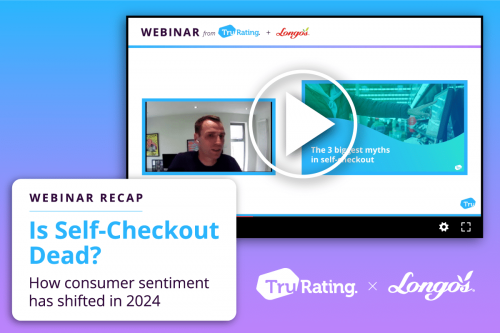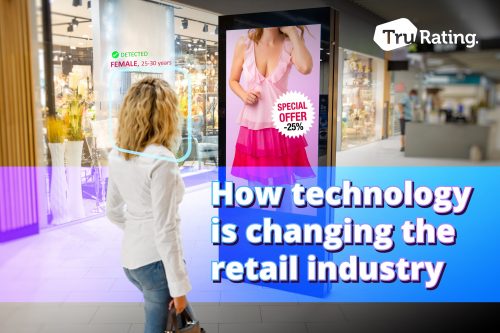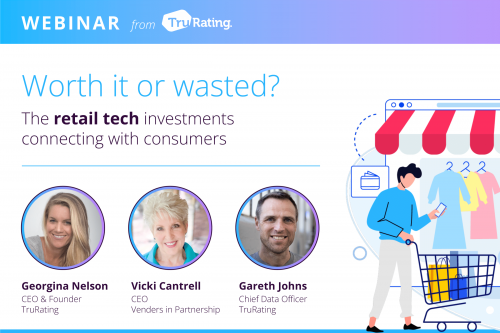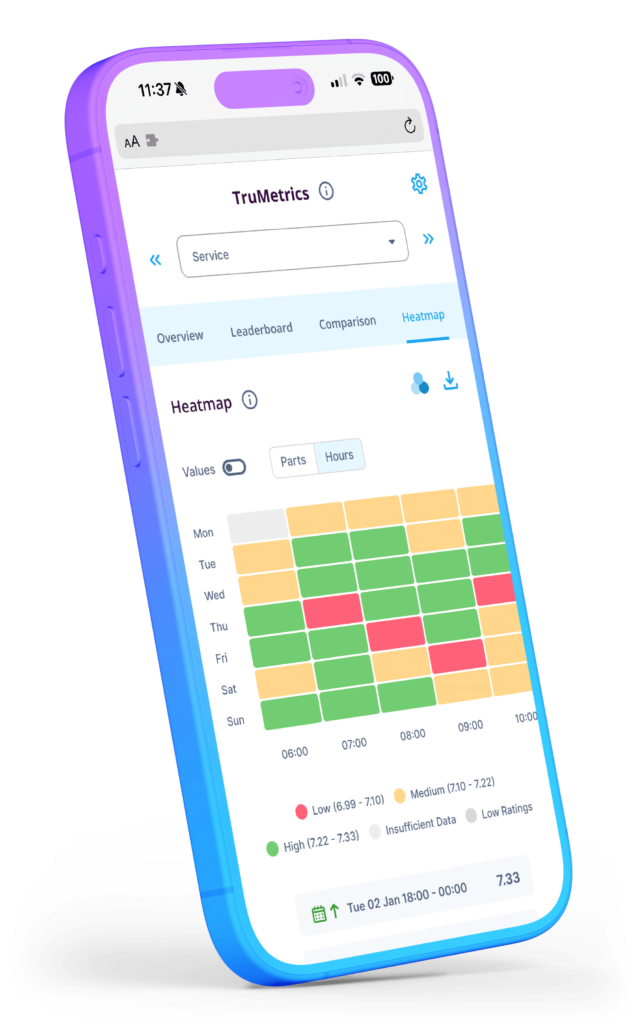We get it – in retail, the only certainty is uncertainty. However, even in the context of constant evolution, customer experience continues to stand out as a differentiator – a reason people will choose your brand, spend more, and ultimately remain loyal for longer. Yet, CX is changing, too.
The next wave of CX leaders won’t think of CX as just a complaint system, chasing after their angriest, loudest customers. They won’t think of it as an NPS tracker that senior execs watch go up or down, with no real idea of what it means. They won’t think of it as a way to kick off a couple of expensive initiatives a year, based on an unrepresentative set of customer comments.
If CX is going to pay off on its promise, it’ll need to start hearing more voices, make feedback available to everyone in an organisation, link changes to financial impact, and be more transparent with customers about how their data is being used and acted upon. At TruRating, we call this next generation of customer experience Open CX, and we believe it’s how brands generate real ROI.
Let’s look at how we got here and the ways CX is changing.
Getting real with customer feedback
Traditionally, customer feedback was all unsolicited – if you had a problem, you could call up the company to complain. Then came surveys, first paper-based then online. Yet, only the angriest customers or most rabid fans would fill those out, and it became hard to connect that data to financial impact and ROI.
Major players in the retail game are connecting customer feedback directly to the checkout, asking questions at point-of-purchase via a payment terminal. It’s about understanding every move we make in the store at a scale never seen before.
With that volume of feedback, you’re able to pinpoint issues at a granular, store level, and with much greater potential reach and a higher level of validity.
Improving the experience of frontline heroes
Open CX means ensuring your frontline benefits from customer feedback that is more truly representative so you’re not making changes based on outliers.
Because the data collection is more immediate, you’re not fixing problems long after they happen or fixing the wrong problems. Instead, you’re responding to customer issues with many long-lasting, ROI-driving improvements.
For most retailers, customer experience won’t necessarily improve because of one, centrally-directly initiative. What benefits the customer experience is hundreds upon thousands of employees having the knowledge they need to make small CX improvements, each and every day.
Making CX a profit driver, not a cost centre
Historically, CX has been seen as a nice-to-have–-a way to deliver exceptional experiences to a select few. In tougher economic times, that approach won’t do.
When you collect feedback at the point of payment, you can then connect it to dozens of other data points–from basket size to items bought, time of day to checkout method. In that way, you can more closely track whether the changes you’re making have a real impact. Relevant data points can include whether self-checkout modalities improve loyalty to whether there is a relationship between store cleanliness and basket size.
Keeping it private, yet personal
Privacy remains an important part of the CX equation. Retailers must find the sweet spot between getting to know customers and not being intrusive. It’s not just a legal concern; it’s about building trust. Brands are the guardians of customer data, making sure it’s used to enhance the experience rather than invade our personal space.
Let’s explore the connection between privacy, and higher response rates you can achieve when you gather feedback at point of payment. If you hear from a much higher sample of customers, you can make improvements on a vast scale, versus relying on following up with individuals. That means you can make anonymity and privacy a feature of your CX program, not an afterthought.
Embracing the customer-centric future
The convergence of personalization and consumer analytics signifies a paradigm shift in how retailers approach the customer experience. It’s not merely a technological upgrade; it’s a business transformation that places the customer at the heart of every decision.
By embracing practices that link feedback to transactions, involve frontline staff in real-time improvements, and prioritize consumer privacy, retailers are not just adapting to change. They are proactively shaping the future of retail.
This customer-centric future demands a holistic approach that extends beyond technological implementations. It requires a mindset shift where retailers view each customer interaction as an opportunity to create a lasting impression. The fusion of in-store personalization and consumer analytics is not just a ‘trend’ but a strategic imperative for those aiming to thrive in the ever-evolving world of retail.
Crafting unique experiences: personalization in the age of Open CX
In-store personalization is the linchpin that elevates the shopping experience from transactional to personal. But historically, personalization has translated into following up with a small number of dissatisfied customers to win them back.
Yet, when you can gather feedback from so many more people via feedback gathered at point of payment, “personalization” means something very different.
This personalization extends beyond basic close-the-loop techniques or product recommendations based on past purchases. It encompasses the entire customer journey at a granular level. From the moment a customer enters the store to the post-purchase interactions, every touchpoint becomes an opportunity to make a positive impression.
For instance, a customer who prefers a quick, efficient shopping experience might appreciate express checkout lanes, while another who enjoys exploring new products might be drawn to interactive displays or personalized assistance. Knowing the ratio among your customers allows you to create personalized experiences at scale—and remain profitable.
Embracing transparency
The traditional concept of CX is undergoing a radical transformation. It’s not just about providing a service; it’s about operating in an environment where transparency is demanded by the modern consumer.
They want to know how and why their feedback is being collected. They want to know what you’re doing with it and that you take it seriously. And more than anything, they want to see the improvements you’ve made.
Transparency in retail leadership is no longer an option but a necessity. Customers today are more informed and discerning than ever before. They seek not just products but experiences, and they demand transparency in how those experiences are curated. Retail leaders who understand this paradigm shift are poised to not only survive but thrive in the next generation of retail.
-
- Transparency in customer feedback
Transparency begins with the democratization of customer feedback and ratings. Modern consumers are not satisfied with one-way communication; they want their voices to be heard and acknowledged. That’s why Open CX leaders not only gather feedback but also make it public through profile pages that take customers behind the scenes at their favourite stores. Getting real, direct, verified feedback in-store is a way for these organizations to control the narrative and demonstrate their customer-centricity with real changes.
-
- Transparency in data usage
As retailers harness the power of consumer analytics, transparency in data usage becomes paramount. Customers want to know how their data is being utilized and, more importantly, how it benefits them. Retail leaders who communicate openly about data privacy measures, the purposes for which customer data is collected, and the tangible benefits customers derive from this data-driven approach build a transparent foundation that enhances customer trust.
-
- Transparency to build trust
Trust is one of the core currencies of modern retail, and transparency is how trust is earned. In the next generation of retail leaders, those who prioritize transparency are likely to emerge as industry trailblazers. Trust is not just about delivering a flawless customer experience; it’s about being honest and forthcoming about the challenges, the improvements, and the journey toward excellence.
The future of retail leadership
As we stand at the intersection of in-store personalization, consumer analytics, and transparency, the future of retail leadership comes into sharper focus. The leaders of tomorrow will not just be adept at leveraging technology. They will shape organizations that prioritize the customer, value transparency, and navigate the complexities of the modern retail landscape.
As retail leaders navigate this evolution, they must recognize that the next generation of consumers seeks more than products. They seek meaningful experiences while valuing privacy. The leaders who understand this shift, who prioritize transparency, and who create an environment where the customer is an active collaborator in their own retail journey are the ones who will lead the way into the future.
“CX is dead. Long live CX.” The traditional CX model is giving way to a more dynamic, transparent, and customer-centric approach. Those who embrace this evolution will not only survive in the next generation of retail but will thrive as leaders who understand that the true essence of CX lies in the ongoing, transparent relationship between retailers and their customers.
*This article is a part of the Rethink Retail – Retail Trends Report: Realizing the Store of Tomorrow, with contributions from TruRating. TruRating’s insights provide valuable perspectives on emerging trends and innovations shaping the future of retail. Learn how our customer feedback platform can help your business.














